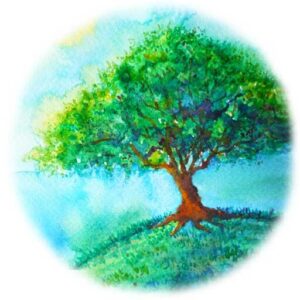 Gaia is the wise, evolving, enduring essence of Mother Earth. She encompasses the physical and spiritual manifestations of our planet: the forests, mountains, oceans, rivers; the animals and plants, the fungi and bacteria, the soils and biomes; as well as all the immaterial beings of the numinous otherworldly realms. Her irresistible forces of regeneration energize, shape, and continually renew the totality of planetary life, including humanity.
Gaia is the wise, evolving, enduring essence of Mother Earth. She encompasses the physical and spiritual manifestations of our planet: the forests, mountains, oceans, rivers; the animals and plants, the fungi and bacteria, the soils and biomes; as well as all the immaterial beings of the numinous otherworldly realms. Her irresistible forces of regeneration energize, shape, and continually renew the totality of planetary life, including humanity.
The name “Gaia” originally referred to the Earth Goddess of the ancient Greeks. Her name was borrowed much later by the scientist James Lovelock to denote his acclaimed Gaia Hypothesis that has inspired so many of us.* By now, though, the reality of Gaia has come to surpass both culture and science.
Gaia embodies a universal spirituality of the Sacred Land, one that embraces and also goes beyond specific deities or archetypes. Her esteemed sisters are many: Danu, Spider Grandmother, Isis, Quan Yin, Green Tara, Yemaya, and countless others. Her beloved brothers include the Green Man, Cernunnos, Pan, and Oxossi. Gaia’s nature comprises renewal and returns, and these forces can support and inspire our own return to beneficent, positive ways to live on the earth and with one another.
Gaia is continuously birthing a dynamic state of balance—a living equilibrium that reflects the earth’s deepest creative forces. We can participate in this balance as we attune with the Green World of Gaia and allow its light to reveal and illuminate our own most authentic self.
So, for me, the term “Gaia” denotes the heart of our most important task—the journey of attuning with the vast beingness of Mother Earth, and transforming ourselves to respond to Her wisdom, power and love ever more deeply. All of the writings here open doors to this sacred work. In a sense, “Gaia” can be a convenient yet reverent shorthand for the generous, bounteous aliveness that is always calling to us to come home—home to the Green World of Nature and home to ourselves. I invite all my readers to join me in this expansive usage throughout this blog. Let’s begin….
*Explicated by Lovelock and other scientists in the 1970s, the Gaia Hypothesis proposes that the entire planet is a purposefully self-regulating, homeostatic organism, from the most basic atomic and chemical reactions all the way to complex, evolving expressions of botanical and zoological life. It is summarized in James Lovelock, Gaia: A New Look at Life on Earth, Oxford New Science Library, first published in 1979, with many subsequent editions; and in many other books and scientific papers. The Gaia Hypothesis has been ongoingly debated by the larger scientific community, but is still quite persuasive 50 years later.
